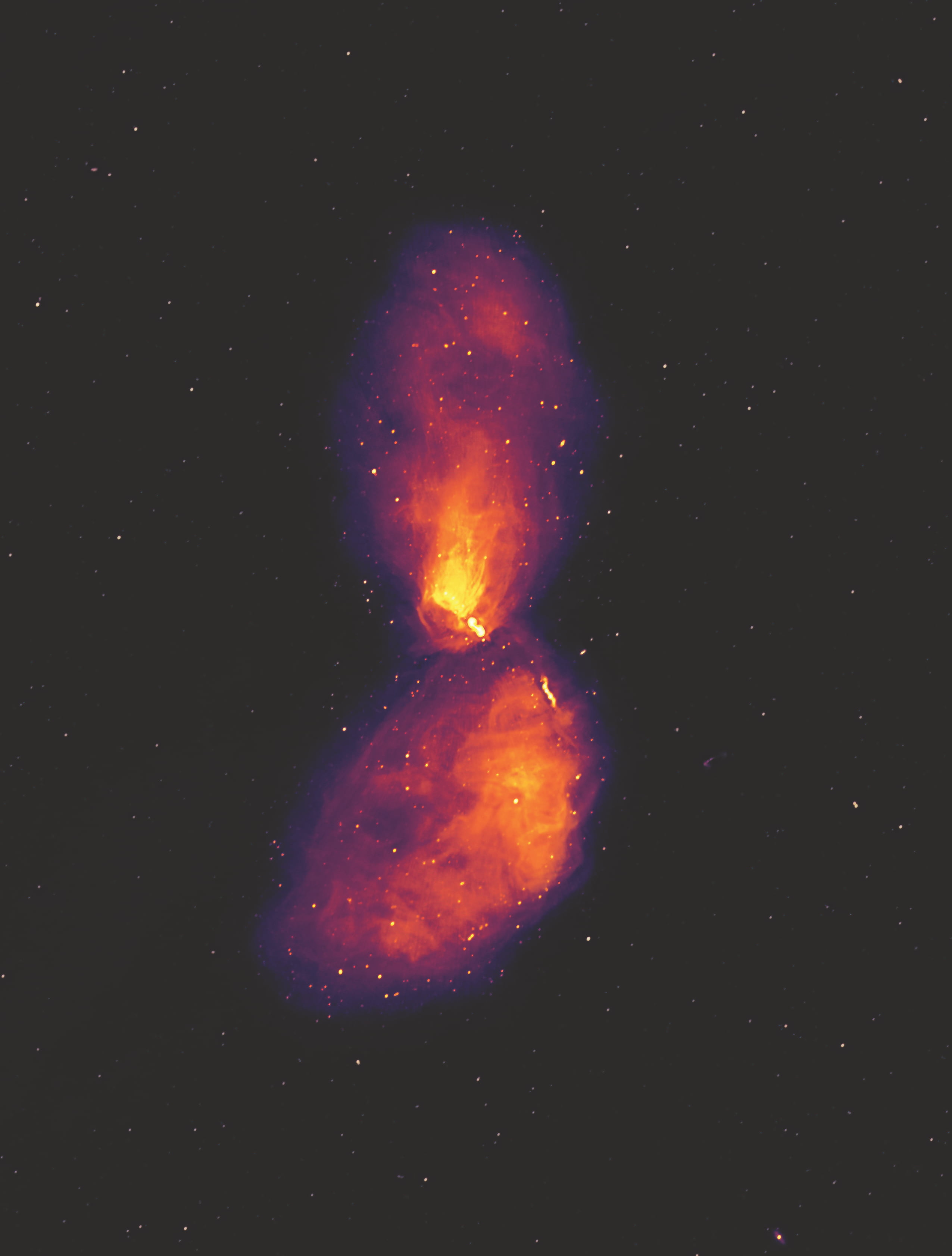
Starlink satellites don’t wreak havoc on all images, and so far, as long as they turn off their transmitters when they are supposed to, these new satellites are leaving alone the radio sky, and the new Murchison Widefield Array in Western Australia is using its more than 4,000 antennae to capture stunning images of light we can’t see with our eyes. In a newly released image of the galaxy Centaurus A, stunning jets are seen stretching more than a million miles from the galaxy’s energetic heart.
Most large galaxies contain supermassive black holes in their center, and when material spirals in toward the black hole, it can get heated and generate a powerful magnetic field. That magnetic field can, in turn, fire particles out of the galaxy like a rail gun, and those particles, over years and millennia, build up and even interact with their surroundings.
If we could see in the radio, our view of the sky would be very different, and this particular galaxy would stand out in the night as a smudge sixteen times longer than the Moon is wide!
It would look like a smudge – and has looked like a smudge with prior telescopes – because it is so bright that getting a good image was hard. According to lead author Benjamin McKinley: Previous radio observations could not handle the extreme brightness of the jets and details of the larger area surrounding the galaxy were distorted, but our new image overcomes these limitations.
This work appears in Nature Astronomy.
The Murchison Widefield Array is a proof of concept system developed to trial new technologies that will be used in the future Square Kilometer Array. What we see here is only a taste of the amazing science that is to come.
More Information
ICRAR press release
“Multi-scale feedback and feeding in the closest radio galaxy Centaurus A,” B. McKinley et al., 2021 December 22, Nature



